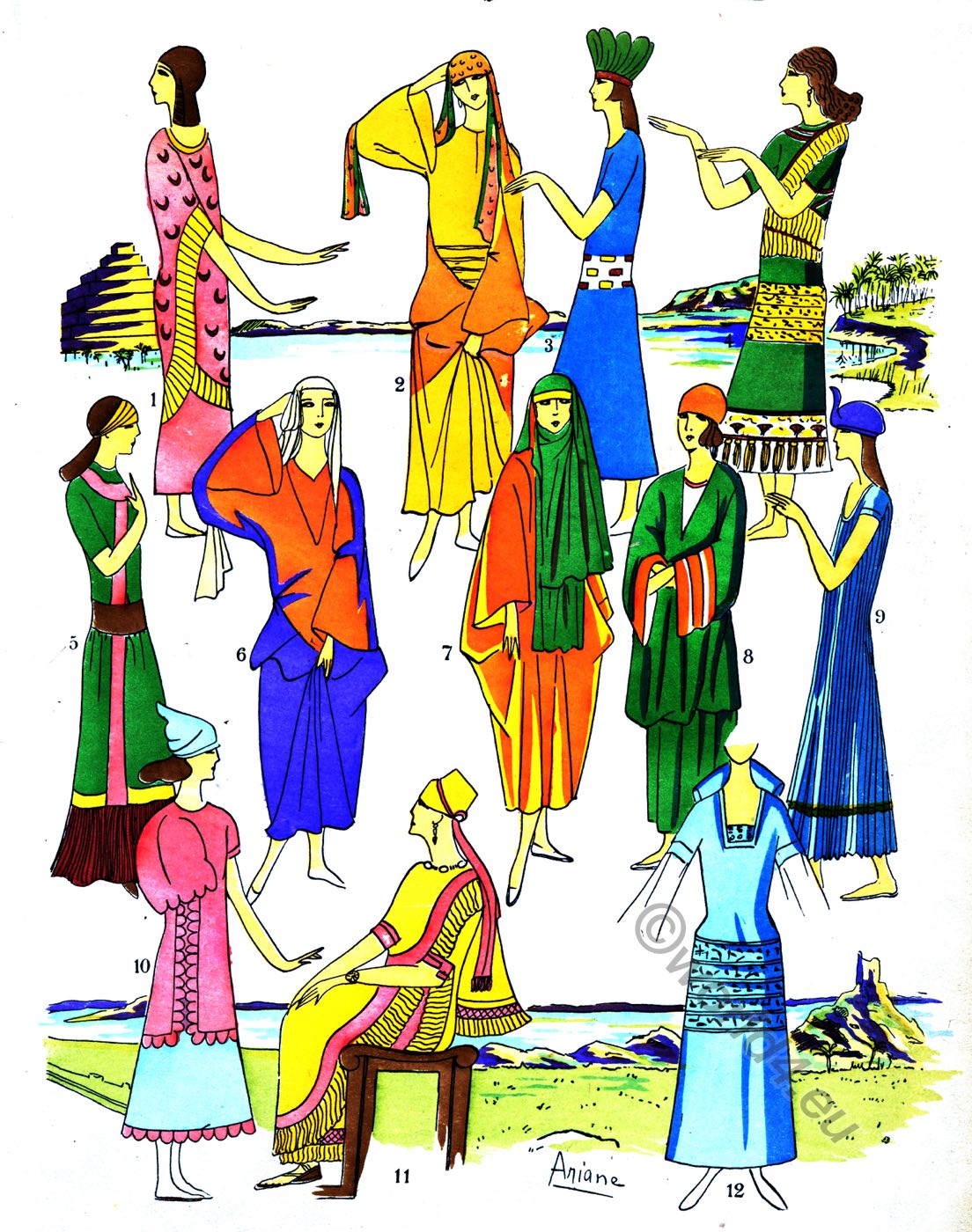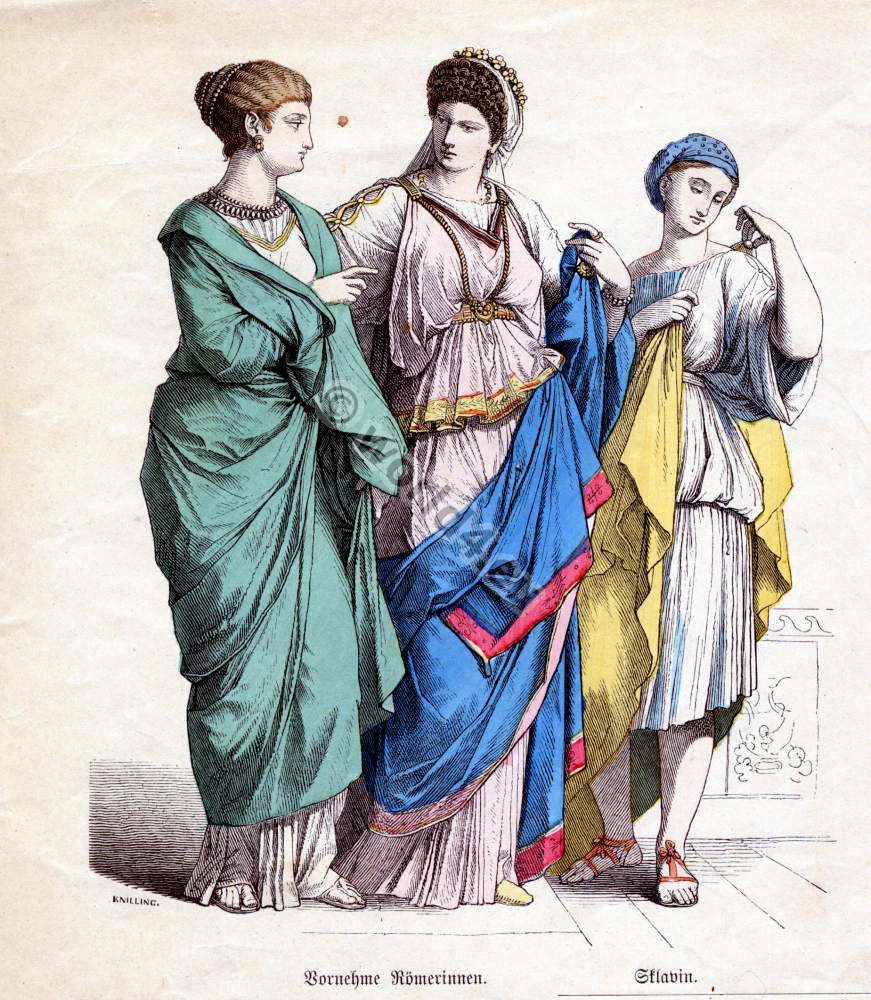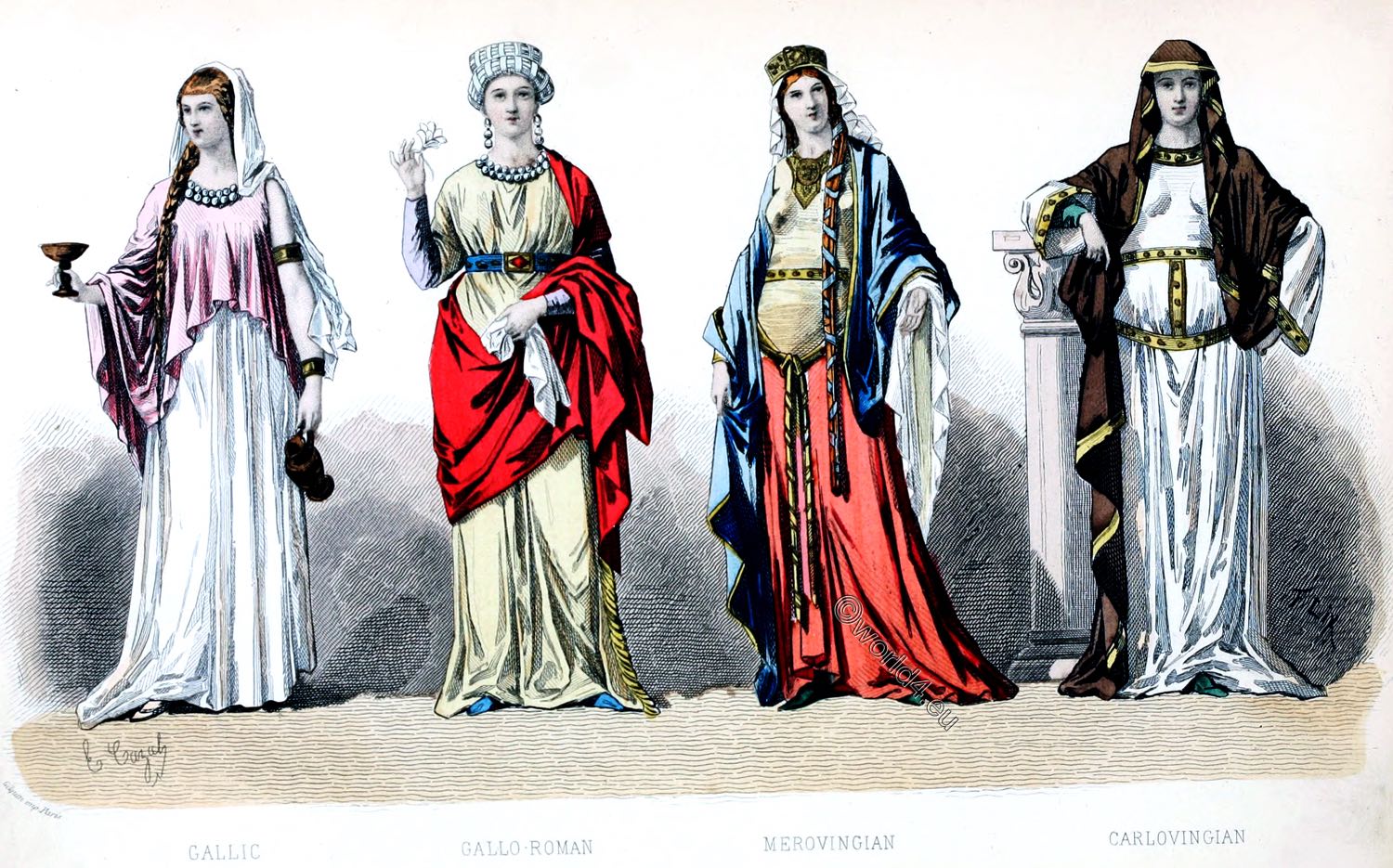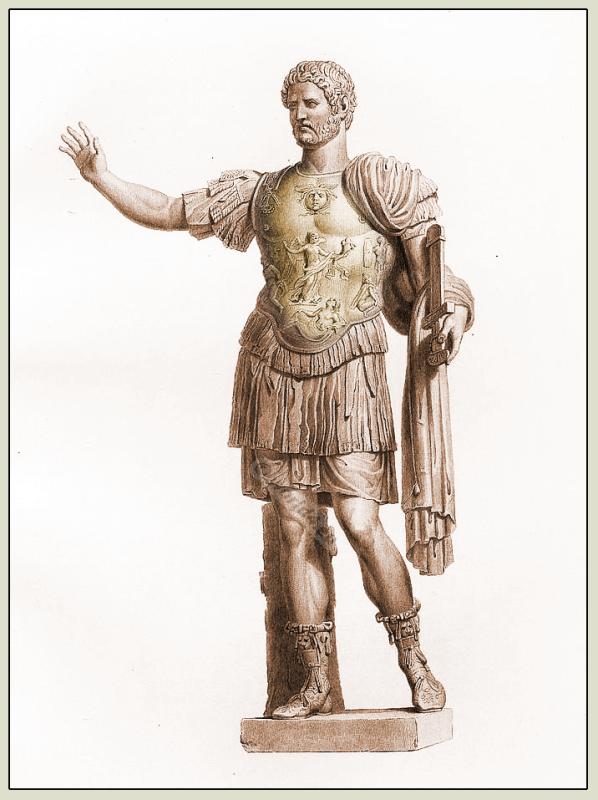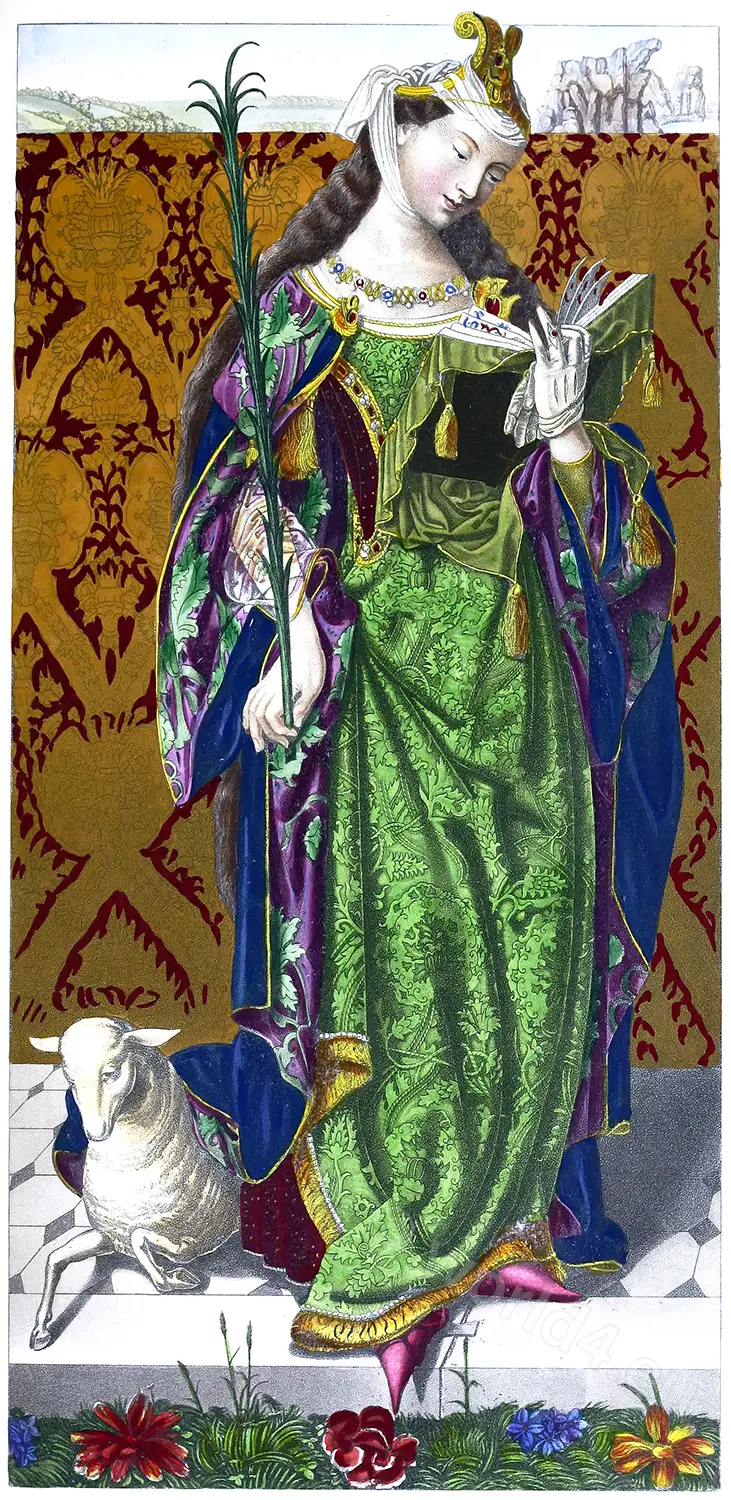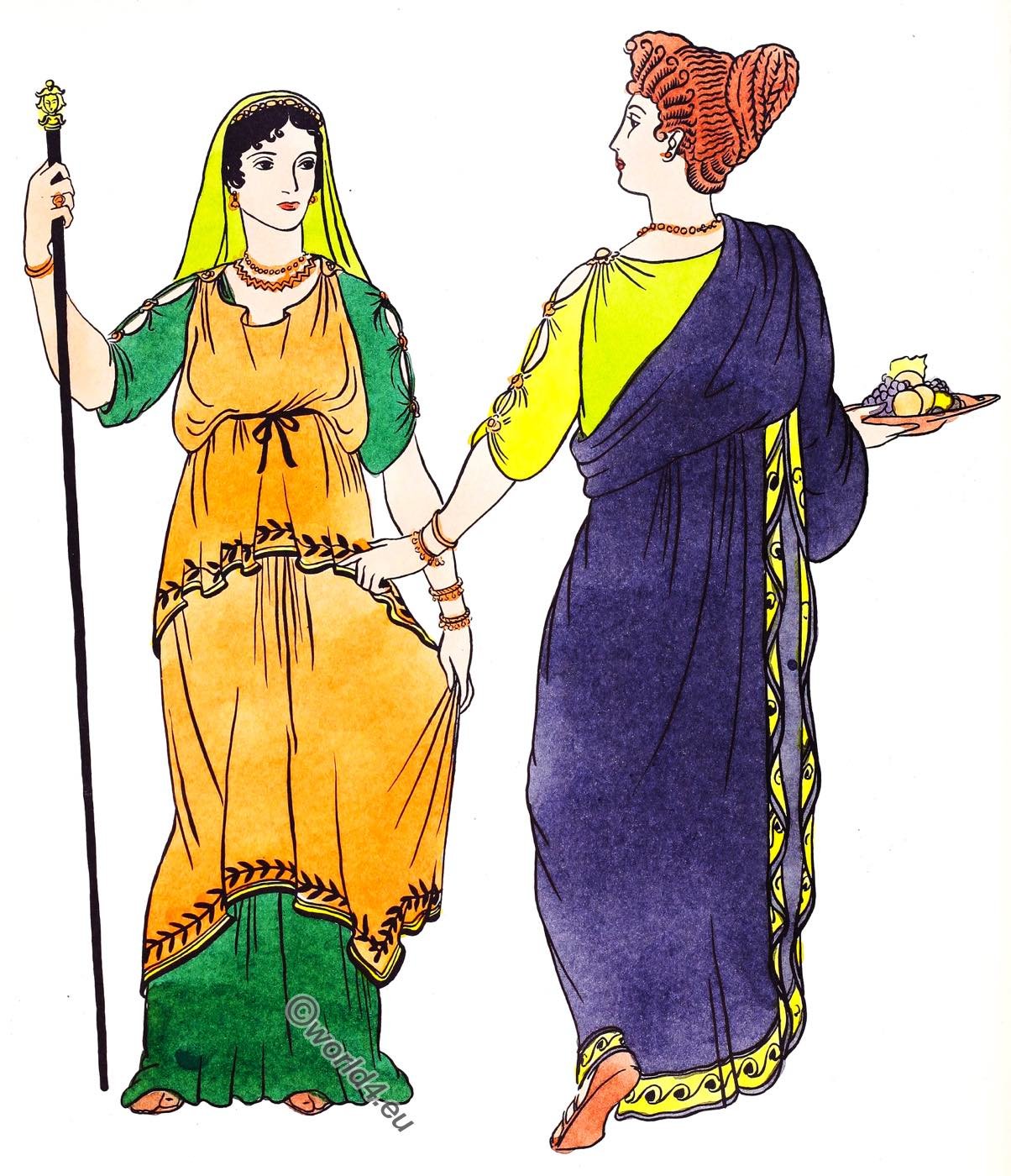
REPUBLICAN R0ME 500 BC – 30 BC.
The costume of the Roman women. The palla, stola, kolpos.
It can be seen by studying the costume of the two Roman women that the garments are very much like the Greek dress. The woman holding the tall cane has her hair arranged in a rather simple manner. Flowing from the back of her head is a veil, probably of silk, though they were also made of other materials. You will recognize her dress as being exactly like the chiton. The Romans called it a stola.
When the Roman woman wore two stolas the outer one usually had a Doric style without the sleeve effect. Both women in this picture are wearing such a combination. The one facing us has girdled her stola over the overfold, thus hiding the pouch. This pouch the Romans called a zona. We recall that among the Greeks it was known as a kolpos. She is wearing sandals, but her long under-stola hides the straps. Notice she is wearing necklaces, rings, and bracelets. The Romans loved to wear a great deal of jewelry and dress up in several different colors.
The woman with her back toward us, who is holding the dish of fruit, has two important features of the Roman woman’s costume that her companion lacks. These are the elaborate headdress and the great cloak called by the Romans the palla.
At first the Roman women followed Greek hairdressing almost exactly, but as time went on their hair-dress became more and more elaborate. This woman has had her hair carefully curled. The hair on the back of her head, perhaps artificial, has been braided, wound around in a knot, set, and decorated with a comb or jewels. The whole thing is called a coiffure. This is a French word, and is used when one wants to talk about any peculiar manner of arranging the hair. Roman women of this time were known for the many different coiffures they invented.
Over her two stolas she has draped the palla. It was exactly like the Greek himation. It was more often worn by the women, since they were not allowed to wear the toga of the men. Rectangular, and usually made of wool, it was draped in many ways. The woman in the picture has draped hers over the right shoulder, under the left arm, and again over the right shoulder.
She is wearing the same type of sandal as the other woman. Notice how it protects her heel.
Source: Museum Extension Project. Costume History. Pictorial works.

Related
Discover more from World4 Costume Culture History
Subscribe to get the latest posts sent to your email.


